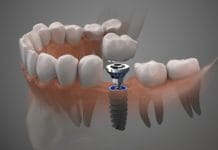1. An error of omission is failing to do something that should have been done to or for a patient. An error of commission is doing the wrong thing to or for a patient.
There are two types of errors that could put patients at risk:
- Failure to do something that should have been done to or for a patient (error of omission)
- Doing the wrong thing to or for a patient (error of commission)
An example of an error of omission in a dental setting would be a lack of proper periodontal charting or inadequate radiographs. An example of an error of commission would be completing non-surgical periodontal therapy on the wrong tooth or quadrant.
Gluyas, H., Morrison, P. (2013). Patient Safety an Essential Guide [E-book]. Palgrave Macmillan.
2. An error that occurs during the planning stage is considered which of the following?
Errors are classified in several different ways; one way is by cognitive stages such as the planning stage, storage stage, or executive stage. An error during the planning stage is referred to as a mistake, an error at the storage stage is a lapse, and an error at the executive stage is a slip. Errors can also be classified as knowledge based (error in the conscious analysis of stored knowledge), skill based (error in retrieving or executing stored knowledge), and/or rule based (error when carrying out a familiar task without conscious thought).
Gluyas, H., Morrison, P. (2013). Patient Safety an Essential Guide [E-book]. Palgrave Macmillan.
3. Dental hygienists are ALWAYS covered under their supervising dentist’s malpractice insurance.
“Hygienists can be named in a suit without the dentist being named, making the hygienists liable. For this reason, dental hygienists should maintain their own malpractice insurance. In short, dentists are not obligated to protect you in a civil or criminal suit. Dental hygienists can and have been culpable of malpractice with rewards up to $999,999.”
Data Analysis Tool. Malpractice Payment Range by Practitioner Type. U.S. (n.d.). Department of Health and Human Services: National Practitioner Data Bank. https://www.npdb.hrsa.gov/analysistool/
Hatfield, S. (2022, April 24). Nurse’s Conviction: Could Hygienists Be Criminally Prosecuted for Errors? Today’s RDH. https://www.todaysrdh.com/nurses-conviction-could-hygienists-be-criminally-prosecuted-for-errors/
4. Patients have a right to refuse radiographs under the ethical principle of autonomy. Dental professionals are obligated to move forward with treatment without the proper diagnostic radiographs in order to respect patient autonomy.
Failure to pursue and accurately acquire imaging of patients is a medical error. The patient has a right to refuse, and by not moving forward with the radiographs, you have respected their decision. However, providing care without the proper diagnostic tools is a breach of the ethical principle of nonmaleficence, putting you at risk of being liable if a malpractice suit were to be filed.
Nadelberg, R. (2015). Medical Errors in Dentistry. https://dentalacademyofce.com/courses/2863/PDF/1509cei_Negalberg_web.pdf
Hatfield, S. (2022, April 24). Nurse’s Conviction: Could Hygienists Be Criminally Prosecuted for Errors? Today’s RDH. https://www.todaysrdh.com/nurses-conviction-could-hygienists-be-criminally-prosecuted-for-errors/
5. Scenario: A new patient to the practice presents for a “regular checkup.” Upon initial examination and periodontal charting, you discover the patient has generalized 4-6mm probing depths with generalized bleeding upon probing. After reviewing the state of the patient’s periodontal health, you recommend non-surgical periodontal therapy. The patient refuses, signs a refusal form, and requests you move forward with a “regular cleaning” (i.e., prophylaxis/D1110). Because you believe the patient has a right to autonomy, you move forward with the “regular cleaning.”
Considering this scenario, the hygienist did not breach any ethical principles. Additionally, the refusal form will serve as evidence to protect the hygienist from litigation in the event a malpractice lawsuit is filed.
A portion of the American Dental Association’s statement regarding the principle of patient autonomy should be highlighted: “This principle expresses the concept that professionals have a duty to treat the patient according to the patient’s desires, within the bounds of accepted treatment.”
This highlights that a patient has a right to refuse but cannot consent to substandard care under any circumstances. The standard of care for patients with periodontal disease is non-surgical periodontal therapy. Providing any care that falls beneath this standard makes you liable. Additionally, the refusal form you had the patient sign might just be used as evidence AGAINST you. A signed refusal form shows you are aware the patient has periodontal disease and you made the decision to provide substandard care. This is a perfect example of supervised neglect.
Patient Autonomy: Section 1. (n.d.). American Dental Association. https://www.ada.org/about/principles/code-of-ethics/patient-autonomy
Hatfield, S. (2022, April 24). Nurse’s Conviction: Could Hygienists Be Criminally Prosecuted for Errors? Today’s RDH. https://www.todaysrdh.com/nurses-conviction-could-hygienists-be-criminally-prosecuted-for-errors/
6. Not having the resources necessary to provide the standard of care to patients properly is a medical error.
Not having the resources to provide the standard of care is a medical error. This may not be the fault of the hygienist, as most hygienists are provided with the instruments, equipment, and other supplies they need to provide care through the facility or dentist by which they are employed.
An example of this would be not having probes to complete comprehensive periodontal charting or having probes that can’t be read or are misshapen. Another example is not being provided with more than one slow-speed handpiece so they can be sterilized between each patient. It is important to request the proper items you need to provide the standard of care expected of dental hygienists. If this request is not met, it may be time to evaluate if the practice/facility is right for you.
Gluyas, H., Morrison, P. (2013). Patient Safety an Essential Guide [E-book]. Palgrave Macmillan.
Vavrosky, K. (2021, July 19). Ask Kara RDH: Do I really need to sterilize slow-speed handpieces after every patient? Today’s RDH. https://www.todaysrdh.com/ask-kara-rdh-do-i-really-need-to-sterilize-slow-speed-handpieces-after-every-patient/
7. Which of the following situations increases the risk of a medical error occurring?
Stress, distractions, complacency, and being tired or unwell can increase the risk of a medical error. Dental hygienists often run on autopilot just to keep up due to shortened appointment times and assisted hygiene, which often relies on an assistant to document treatment and patient interactions. This can lead to exhaustion, complacency, and distraction, increasing the risk of an error occurring. For your health and the health of your patients, please take the time to discuss what you need to prevent this type of environment that leads to physical and emotional burnout that will affect your patients and the level of care you can provide.
Gluyas, H., Morrison, P. (2013). Patient Safety an Essential Guide [E-book]. Palgrave Macmillan.








